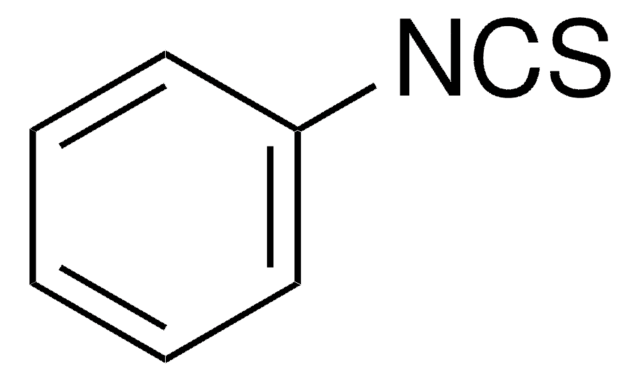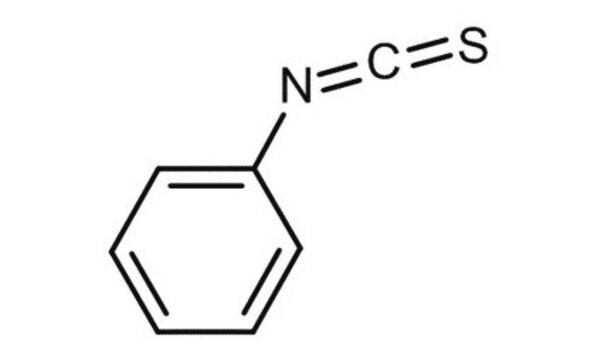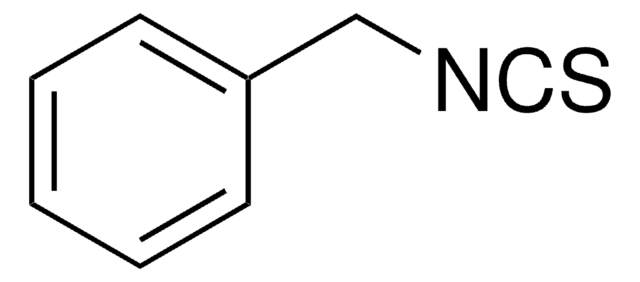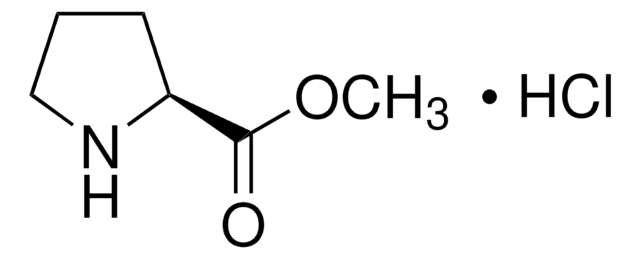Wichtige Dokumente
P1034
Phenylisothiocyanat
Sigma Grade, 8.36 M, suitable for solid phase protein sequencing analysis, ≥99% (GC), liquid
Synonym(e):
PITC, Phenylsenföl
About This Item
Empfohlene Produkte
Qualität
Sigma Grade
Qualitätsniveau
Assay
≥99% (GC)
Form
liquid
Konzentration
8.36 M
Brechungsindex
n20/D 1.6515 (lit.)
bp
218 °C (lit.)
mp (Schmelzpunkt)
−21 °C (lit.)
Dichte
1.132 g/mL at 20 °C (lit.)
Eignung
suitable for solid phase protein sequencing analysis
Lagertemp.
2-8°C
SMILES String
S=C=Nc1ccccc1
InChI
1S/C7H5NS/c9-6-8-7-4-2-1-3-5-7/h1-5H
InChIKey
QKFJKGMPGYROCL-UHFFFAOYSA-N
Suchen Sie nach ähnlichen Produkten? Aufrufen Leitfaden zum Produktvergleich
Allgemeine Beschreibung
Anwendung
Verpackung
Ten mL size packaged in screw cap amber vials under argon.
Signalwort
Danger
H-Sätze
Gefahreneinstufungen
Acute Tox. 3 Oral - Resp. Sens. 1 - Skin Corr. 1B - Skin Sens. 1
Lagerklassenschlüssel
6.1A - Combustible acute toxic Cat. 1 and 2 / very toxic hazardous materials
WGK
WGK 3
Flammpunkt (°F)
190.4 °F - closed cup
Flammpunkt (°C)
88 °C - closed cup
Persönliche Schutzausrüstung
Faceshields, Gloves, Goggles, type ABEK (EN14387) respirator filter
Hier finden Sie alle aktuellen Versionen:
Besitzen Sie dieses Produkt bereits?
In der Dokumentenbibliothek finden Sie die Dokumentation zu den Produkten, die Sie kürzlich erworben haben.
Kunden haben sich ebenfalls angesehen
Unser Team von Wissenschaftlern verfügt über Erfahrung in allen Forschungsbereichen einschließlich Life Science, Materialwissenschaften, chemischer Synthese, Chromatographie, Analytik und vielen mehr..
Setzen Sie sich mit dem technischen Dienst in Verbindung.













